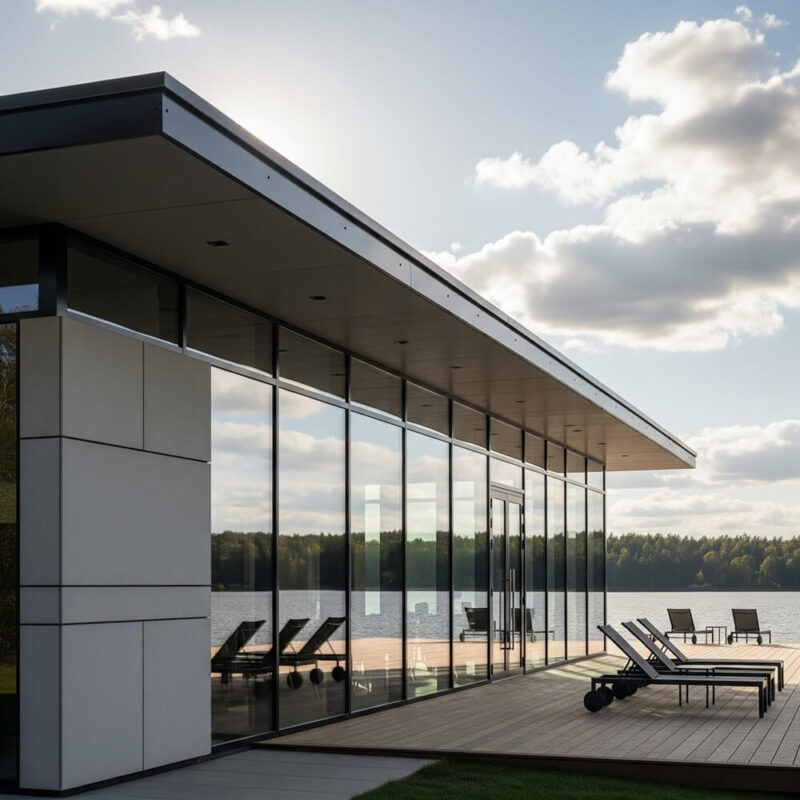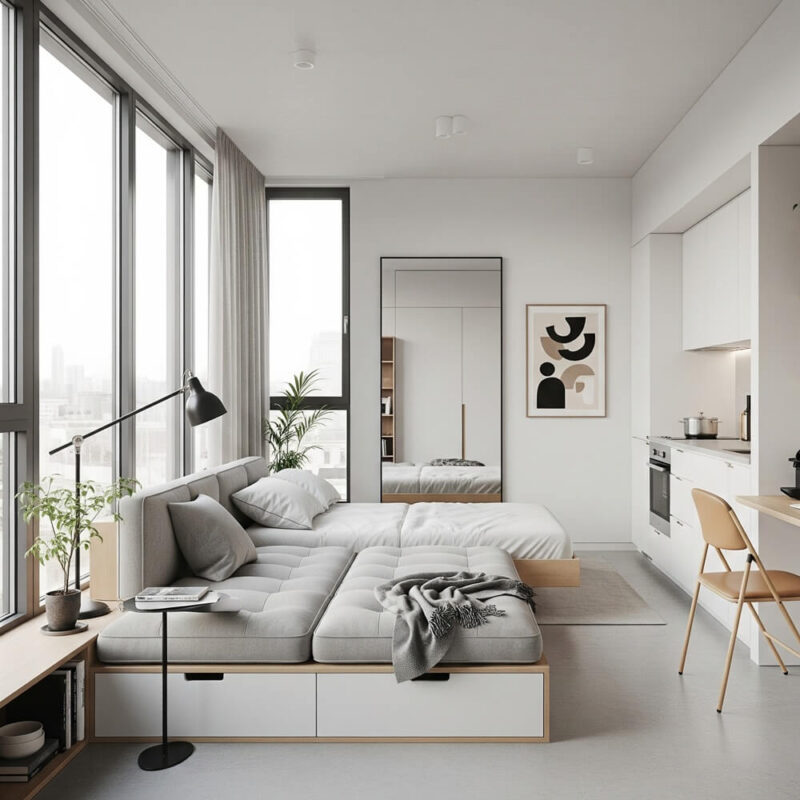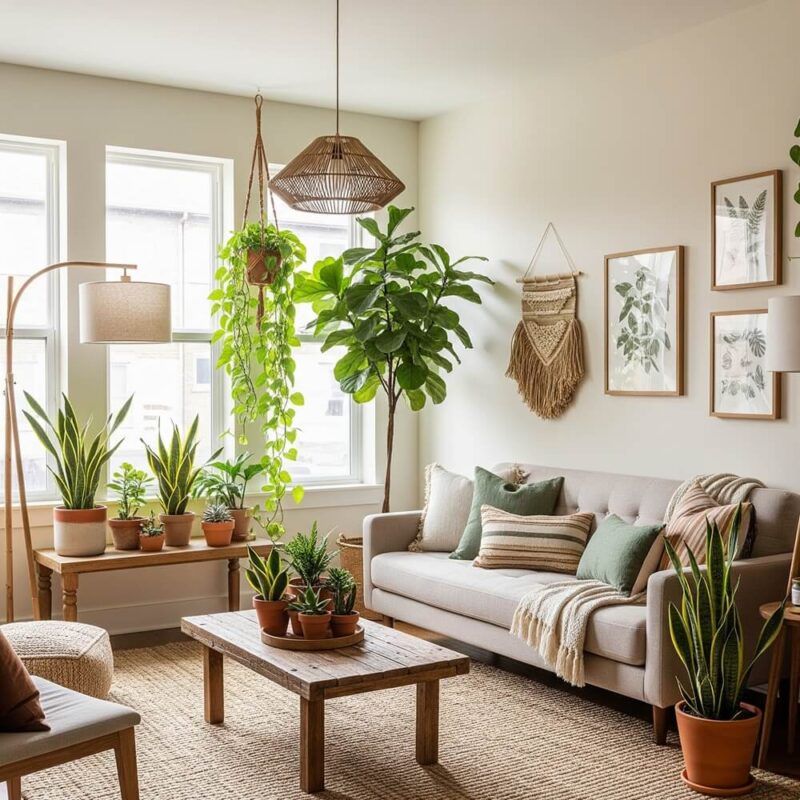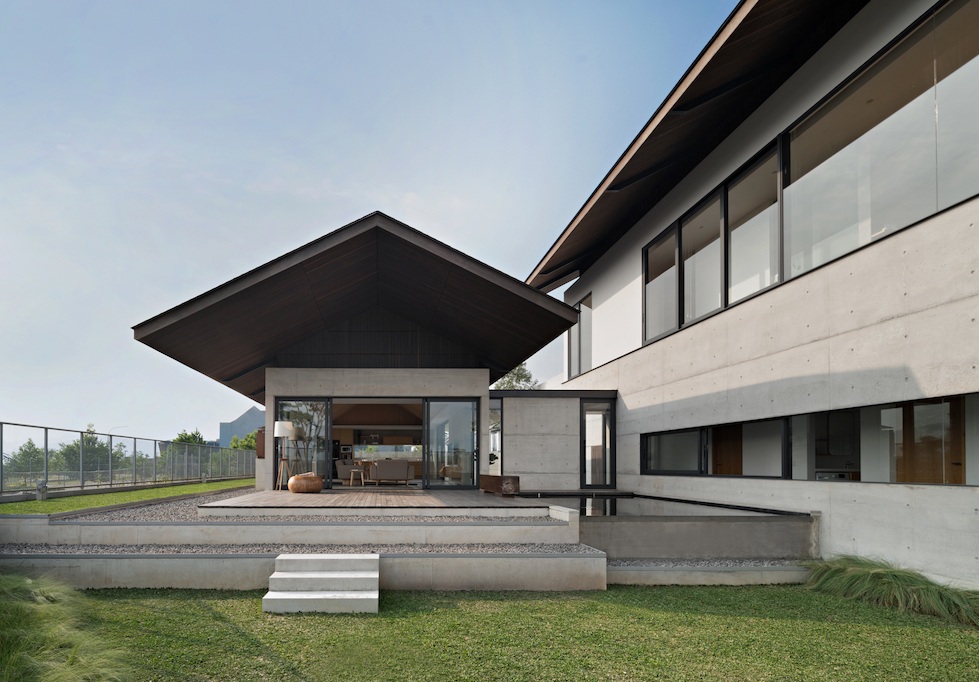Mastering Your Home’s Palette: A Comprehensive Guide to Interior Decorating with Color
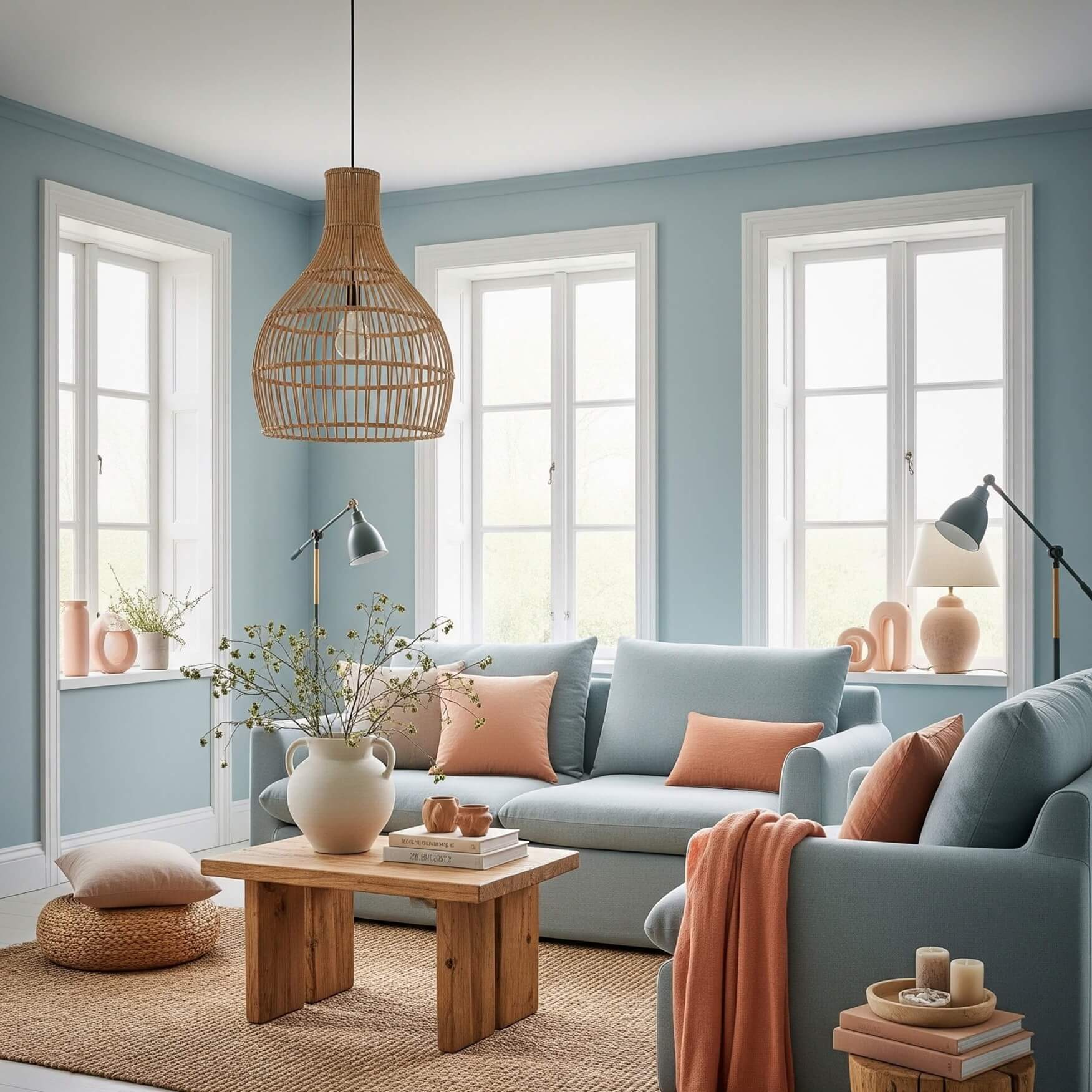
Have you ever walked into a room and immediately felt a certain way – calm, energized, or perhaps even a little anxious? Chances are, color played a starring role in that reaction. Color isn’t just about aesthetics; it’s a powerful force in interior design, profoundly impacting our emotions, perceptions, and the entire feel of a space. It defines the mood, enhances natural light, and can even subtly alter a room’s perceived dimensions. Yet, for many, the sheer myriad of choices can feel overwhelming, turning what should be an exciting design journey into a daunting task.
But what if you could confidently select colors that not only look good but truly resonate with how you want your home to feel? This comprehensive guide will demystify color selection, empowering you to create harmonious and personalized interiors. We’ll delve into the foundational principles of color theory, explore the fascinating psychology behind different hues, and provide practical, step-by-step guidance on how to bring your vision to life. Get ready to unlock the transformative power of color in your home!
The Foundation – Understanding Color Theory
To truly master your interior palette, we need to speak the language of color. It all begins with the color wheel, an indispensable tool that organizes hues in a way that reveals their relationships.
The Color Wheel Explained:
- Primary Colors (Red, Blue, Yellow): These are the building blocks – you can’t create them by mixing other colors.
- Secondary Colors (Orange, Green, Violet): These are formed by mixing two primary colors. Red + Yellow = Orange; Yellow + Blue = Green; Blue + Red = Violet.
- Tertiary Colors: These come from mixing a primary color with an adjacent secondary color (e.g., Red-Orange, Blue-Green). Understanding these relationships is crucial for creating cohesive schemes.
Key Color Properties: Beyond just the name of a color, every hue has three essential properties that dictate its appearance and impact:
Hue: Simply put, this is the pure, unadulterated color itself, like “true blue” or “bright red.”
Value (Lightness/Darkness): This refers to how light or dark a color is.
- Tints: Created by adding white to a hue, making it lighter and often more airy (think pastel pink from red).
- Shades: Created by adding black to a hue, making it darker and often more dramatic (think navy blue from royal blue).
- Tones: Created by adding gray to a hue, resulting in a muted, desaturated version that feels more sophisticated and less intense.
Saturation (Intensity/Purity): This describes how vivid or dull a color appears.
- High saturation: Colors are bright, bold, and pure.
- Low saturation: Colors are muted, soft, and subdued. Understanding these properties allows for nuanced palettes, enabling you to use the same hue in countless ways to achieve different effects.
Warm vs. Cool Colors: This fundamental distinction dictates the mood and perceived size of a room.
- Warm Colors (Reds, Oranges, Yellows): These colors evoke energy, coziness, and intimacy. They tend to advance, making a space feel smaller and more inviting – perfect for living rooms or dining areas.
- Cool Colors (Blues, Greens, Violets): These colors promote calmness, serenity, and spaciousness. They tend to recede, making a room feel larger and more open – ideal for bedrooms, bathrooms, or smaller spaces you want to expand visually. Strategically using warm and cool colors can profoundly influence how a room feels and is perceived.
The Heart of the Matter – The Psychology of Color in Interior Design
Colors do more than just exist; they speak to us on a subconscious level, influencing our emotions and behaviors. Knowing the psychology of color helps you select hues that align with the intended function and mood of each room.
- Red: A powerhouse of passion, energy, and excitement. Use it sparingly for dramatic accents or in high-energy spaces like dining rooms or entryways to stimulate conversation. In large doses, it can be overwhelming and even agitating.
- Blue: Synonymous with serenity, calm, trust, and stability. It’s the go-to for bedrooms, bathrooms, and home offices, promoting relaxation and focus. Darker blues exude sophistication, while lighter blues create an airy, expansive feel.
- Yellow: The color of happiness, optimism, and creativity. Best used in moderation in kitchens, nurseries, or creative studios to uplift and inspire. Overuse can, surprisingly, lead to feelings of anxiety or agitation.
- Green: Reflecting nature, balance, harmony, growth, and renewal. Green is incredibly versatile and can work beautifully in almost any room, from tranquil bedrooms to vibrant living rooms. It promotes well-being and a sense of grounding.
- Orange: Radiates enthusiasm, creativity, warmth, and playfulness. Great for social spaces like living rooms and playrooms. Often used as an accent to add a burst of zest and personality without overpowering the space.
- Purple/Violet: Associated with luxury, creativity, spirituality, and sophistication. Deeper shades convey opulence and richness, while lighter lavenders offer a sense of tranquility. Often found in elegant bedrooms or creative studios.
- Neutrals (White, Black, Gray, Beige, Taupe): These are anything but boring; they are the unsung heroes of interior design, providing a stable foundation for almost any scheme.
- White: Purity, simplicity, and spaciousness. It can make a room feel larger and brighter, but without texture or other colors, it can feel stark or cold.
- Black: Sophistication, drama, and power. Best used as an accent to ground a space or create striking contrast. Too much black can make a space feel smaller or oppressive.
- Gray: Modernity, balance, and sophistication. Highly versatile, from cool, steely tones to warm, inviting charcoal. It’s an excellent backdrop but can feel cold if not warmed with textures or vibrant accents.
- Beige/Taupe: Warmth, naturalness, and timelessness. These offer a comforting and versatile foundation, though they might feel bland without contrasting textures or pops of color.
It’s not just about individual colors; how you combine them amplifies or tempers their psychological effects. A little knowledge here goes a long way in crafting spaces that truly feel right.
Crafting Harmonious Color Schemes
Now that we understand individual colors and their impact, let’s explore how to combine them into harmonious color schemes that sing.
- The 60-30-10 Rule: This is a golden ratio in interior design, providing a simple yet effective framework for balancing colors:
- 60% Dominant Color: This is your main color, typically used on walls, large furniture pieces like sofas, or expansive rugs. It sets the overall tone and mood.
- 30% Secondary Color: This is your supporting color, used on items like curtains, accent chairs, smaller rugs, or one prominent piece of furniture. It adds depth and interest without overwhelming the dominant color.
- 10% Accent Color: This is your pop of personality, reserved for accessories like throw pillows, artwork, decorative objects, or a vibrant vase. It provides visual punch and can be easily changed to refresh the look. Applying this rule ensures balance and prevents any single color from dominating excessively.
- Common Color Schemes Explained with Interior Examples:
- Monochromatic: This scheme uses different tints, tones, and shades of a single hue.
- Pros: Sophisticated, serene, cohesive, and easy to achieve a unified look.
- Cons: Can feel flat or uninteresting without significant variations in texture and pattern.
- Example: A bedroom designed with varying shades of blue – sky blue walls, navy bedding, periwinkle accent pillows, and a deep indigo rug. The subtle differences in value and saturation create depth.
- Analogous: This scheme uses colors adjacent to each other on the color wheel (typically 3 to 5 colors).
- Pros: Inherently harmonious, natural, and soothing, as these colors naturally blend well.
- Cons: Can lack strong contrast and may appear too subtle if not punctuated with varying values or an accent.
- Example: A living room decorated with blues, blue-greens, and greens, creating a calm, nature-inspired oasis.
- Complementary: This scheme uses two colors directly opposite each other on the color wheel.
- Pros: Creates high contrast, vibrancy, and energy, making a bold statement.
- Cons: Can be jarring or overwhelming if not carefully balanced. It’s best to use one color dominantly and the other as a vibrant accent.
- Example: A dramatic dining room with deep purple walls balanced by golden yellow accents in lighting fixtures, art, or a centerpiece.
- Split-Complementary: A more nuanced approach, this scheme uses a base color and the two colors adjacent to its complement.
- Pros: Offers a less jarring contrast than direct complementary, while still providing good visual interest and vibrancy.
- Cons: Requires careful balancing to ensure all three colors work together harmoniously.
- Example: A cozy den with blue as the main color, complemented by accents of yellow-orange (like rich wooden tones) and red-orange (through textiles or art).
- Triadic: This scheme uses three colors evenly spaced around the color wheel, forming an equilateral triangle.
- Pros: Offers a lively and balanced palette that’s visually stimulating, especially with primary or secondary triads.
- Cons: Can be challenging to balance the intensity of three strong colors; often, one color dominates while the others are accents.
- Example: A playful child’s playroom featuring a neutral backdrop with vibrant primary red, blue, and yellow accents in furniture, toys, and wall decor.
- Tetradic (Rectangular/Square): These schemes involve using four colors in two complementary pairs (rectangular uses two pairs, square uses four colors equally spaced).
- Pros: Creates a rich, varied, and sophisticated palette, allowing for complex and layered designs.
- Cons: The most challenging scheme to balance effectively. Requires a clear dominant color to prevent visual chaos.
- Example: An eclectic living room might combine a soft blue and a muted orange as primary colors, with red-violet and yellow-green introduced through patterned textiles, artwork, and unique accessories.
Practical Application – Bringing Your Vision to Life
- Understanding theory is one thing, but applying it to your own home is where the magic happens. Here’s how to turn your color vision into reality.
- Start with Inspiration, Not Just Color: Don’t just pick colors out of thin air. Look for something that already speaks to you: a favorite piece of art, a patterned rug, a beautiful fabric, or even a photograph of a natural landscape you love. Use this inspiration to pull out your core colors and build a palette around it. This ensures your scheme feels authentic to you.
- Consider the Room’s Function: The purpose of a room should heavily influence its color scheme.
- Bedrooms: Aim for calm, restful colors. Cool tones like blues and greens, or muted, soft shades of any hue, promote relaxation.
- Living Rooms: Should feel inviting and comfortable. Warm neutrals work well, as do balanced schemes that encourage conversation and leisure.
- Kitchens: Often benefit from clean, energetic colors like whites, yellows, or vibrant greens to stimulate appetite and activity.
- Dining Rooms: Can handle deeper, richer colors like reds, oranges, or golds to create an intimate and stimulating atmosphere for meals.
- Home Offices: Colors like blues, greens, or grays can foster focus and productivity without being distracting.
- Account for Natural and Artificial Lighting: Light is a game-changer for how colors appear.
- North-facing rooms: Tend to have cooler, indirect light, so they often benefit from warm colors to prevent them from feeling dreary.
- South-facing rooms: Receive abundant, warm light and can handle cooler colors without feeling chilly.
- Artificial light sources (LEDs, incandescents, fluorescents) each have different color temperatures that dramatically alter how paint colors look. Always test colors at different times of day and with your actual lighting fixtures.
- Testing is Non-Negotiable: This is arguably the most crucial step! Never rely solely on tiny paint chips.
- Paint large swatches (at least 2’x2′) on different walls in the room.
- Observe how these colors change throughout the day and night under various lighting conditions. Live with them for a few days before making a decision. This vital step prevents costly mistakes and ensures you’ll love the final result.
- Layering and Texture: Even a monochromatic scheme can look dynamic and engaging when you incorporate varied textures. Texture adds depth, visual interest, and richness, preventing a single-color room from feeling flat. Think rough wood, soft velvet, sleek metal, bumpy knits – these elements enhance the overall sensory experience of your color palette.
- The Power of Neutrals: Far from being boring, neutrals are the backbone of almost every successful color scheme. They provide a calming, stable backdrop that allows bolder colors and interesting textures to truly shine. Whether you choose warm neutrals (creams, beiges, taupes) or cool neutrals (grays, off-whites), they create a sense of harmony and sophistication.
- Integrating Pattern: Patterns often introduce multiple colors and can serve as a bridge, connecting different elements in your scheme. Whether it’s a patterned rug, wallpaper, or upholstery, ensure the colors within the pattern are cohesive with your chosen palette to maintain visual harmony.
Common Pitfalls and Troubleshooting
Even with the best intentions, it’s easy to stumble. Here are some common mistakes and how to avoid them:
- Overdoing It: Too many colors, or too many intense colors, can lead to a chaotic and overwhelming space rather than a harmonious one. Stick to your 60-30-10 rule.
- Ignoring Lighting: As we’ve discussed, colors look drastically different depending on the light. A color you love in the store might look entirely different in your home.
- Not Testing: Seriously, don’t skip the swatch test! It’s the most common mistake and the easiest to fix.
- Forgetting Flow: Ensure color transitions smoothly between adjacent rooms, especially in open-concept spaces. Use a consistent neutral or a harmonious palette throughout.
- Being Too Trendy: While it’s fun to incorporate trends, avoid building your entire permanent scheme around fleeting fads. Focus on timeless principles, then use trends for easily changeable accents.
- Lack of Contrast: Rooms can feel bland and flat without variations in light and dark values. Ensure you have a mix of light, medium, and dark tones for visual interest.
- Fear of Color: Don’t be afraid to experiment! If you’re nervous, start small with accessories, artwork, or a single accent wall. You can always repaint if it doesn’t work out.
Conclusion
Color is undoubtedly one of the most powerful and accessible tools in interior design. It has the incredible ability to influence mood, alter perception, and articulate your personal style without uttering a single word. While there are guiding principles and theories, remember there are no absolute “right” or “wrong” colors – only what feels authentic and comfortable for you and your unique space.
Armed with a deeper understanding of color theory, psychology, and practical application, you’re now equipped to confidently select and implement the perfect palette for your home. So, go ahead, start experimenting, have fun with the process, and truly enjoy the transformative power of color! Your perfect palette awaits.
Related Posts
Transforming Small Spaces: Smart Solutions for Compact Living
-
Posted by
masoud
- 0 comments
Sustainable Interior Design: Your Ultimate Guide to a Beautiful, Eco-Friendly Home
-
Posted by
masoud
- 0 comments
Modern Buildings: The Resurgence of Craftsmanship and Local Materials
-
Posted by
masoud
- 0 comments
